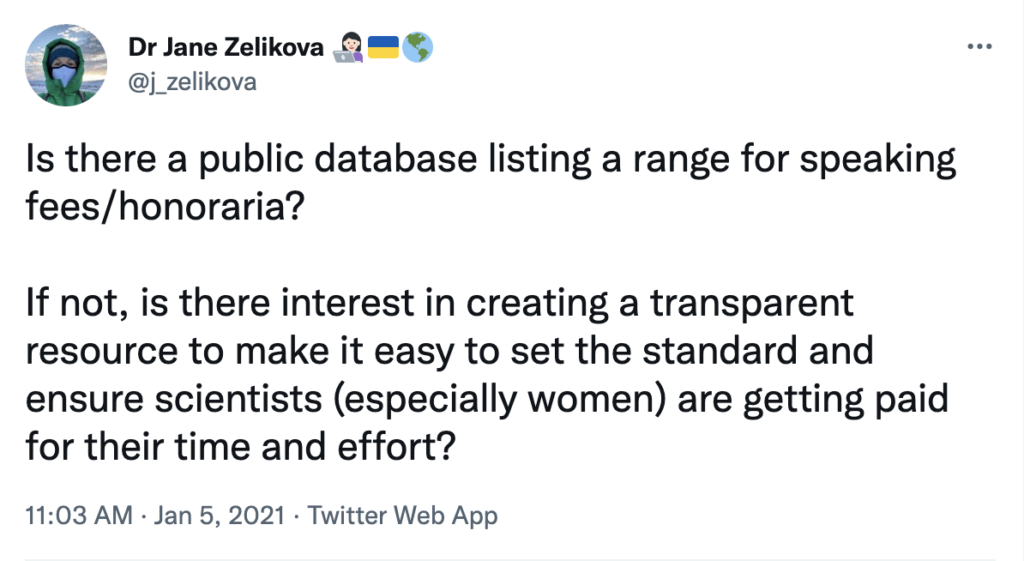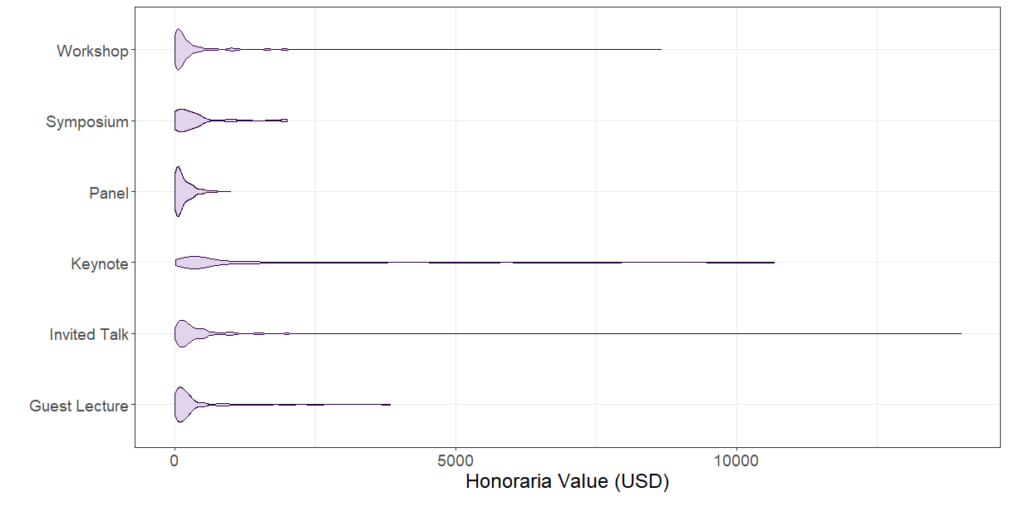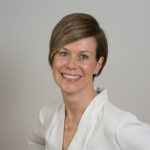New resource promotes fair compensation for women in STEMM
A database launched this month aims to normalize compensation for expertise in science, technology, engineering, mathematics and medicine (STEMM). It makes public crowdsourced data on speaker fees and honoraria — small yet significant forms of reward and recognition in academia.
The database is the result of the Fix the Gap initiative, launched in 2021 by 500 Women Scientists, a global grassroots organization working to break down barriers for women in science.
The initiative was sparked by a Tweet from ecologist Jane Zelikova, co-founder of 500 Women Scientists, in which she suggested that a transparent resource could help “set the standard and ensure scientists, especially women, get paid for their time and effort.”
 Tweet from Jane Zelikova
Tweet from Jane Zelikova
The database comes at a time when governments are taking concrete steps to close the gender wage gap. Public sector salary disclosure legislation, such as the Government of Canada’s Pay Equity Act that came into force last August, requires pay transparency reporting in federally regulated workplaces. It could have a spillover effect into academia. The COVID-19 pandemic also exaggerated longstanding gender inequities in academia and elsewhere, underscoring the urgent need to rethink how academic work is valued and compensated.
Fix the Gap contains more than 1,000 entries submitted by STEMM professionals around the world in response to a survey. The majority of respondents were women with doctoral degrees from North America. (Twelve percent were based in Canada.)
 A summary violin plot of honoraria (USD, per-hour) received by STEMM professionals across different types of speaking engagements. Source: 500 Women Scientists.
A summary violin plot of honoraria (USD, per-hour) received by STEMM professionals across different types of speaking engagements. Source: 500 Women Scientists.In addition to fees and honoraria, 500 Women Scientists collected demographic information and queried perceptions around compensation. The results are still being analyzed but, according to Qaiser, several themes emerged. For example, respondents said:
- They had not thought about receiving honoraria for speaking engagements before;
- It is difficult to navigate financial compensation; and,
- A cultural change is necessary to better value researchers’ time and efforts, especially for researchers belonging to historically excluded communities.
Gender Pay Gap
According to the Canadian Association of University Teachers, there is a small but persistent gap in salaries between men and women in academia. Compared to their male counterparts, full-time women university teachers earn approximately 90 cents on the dollar. The earnings gap widens for part-time staff, women college instructors and racialized teachers at universities and colleges.
Data on earnings in STEMM fields is harder to come by. According to the Higher Education Quality Council of Ontario (HECQO), which is leading a research project on gender disparities among faculty in Ontario universities, persistent inequalities “are especially prevalent in male-dominated disciplines, such as… STEM." In medicine, a 2019 study led by researchers at the University of Toronto showed that female surgeons in Ontario earn 24 per cent less in hourly wages than male surgeons.
Qaiser said 500 Women Scientists is currently considering how to expand the Fix the Gap initiative, including whether to create a similar database focused on salaries in STEMM.
“Speaking engagements [and honoraria] are the first step on this long ladder. There are so many aspects to pay equity, from paid leave to awards and scholarships... as well as salaries. They are all aspects of hidden knowledge in STEMM, and that’s why I think a database like this is needed,” said Qaiser.
STEMM professionals can still submit information to the Fix the Gap database. Qaiser said the team hopes it will continue to grow and become more representative of how STEMM professionals, including men and women, are compensated around the world.
R$
| Organizations: | |
| People: | |
| Topics: |
Events For Leaders in
Science, Tech, Innovation, and Policy
Discuss and learn from those in the know at our virtual and in-person events.
See Upcoming Events
You have 0 free articles remaining.
Don't miss out - start your free trial today.
Start your FREE trial Already a member? Log in
By using this website, you agree to our use of cookies. We use cookies to provide you with a great experience and to help our website run effectively in accordance with our Privacy Policy and Terms of Service.





